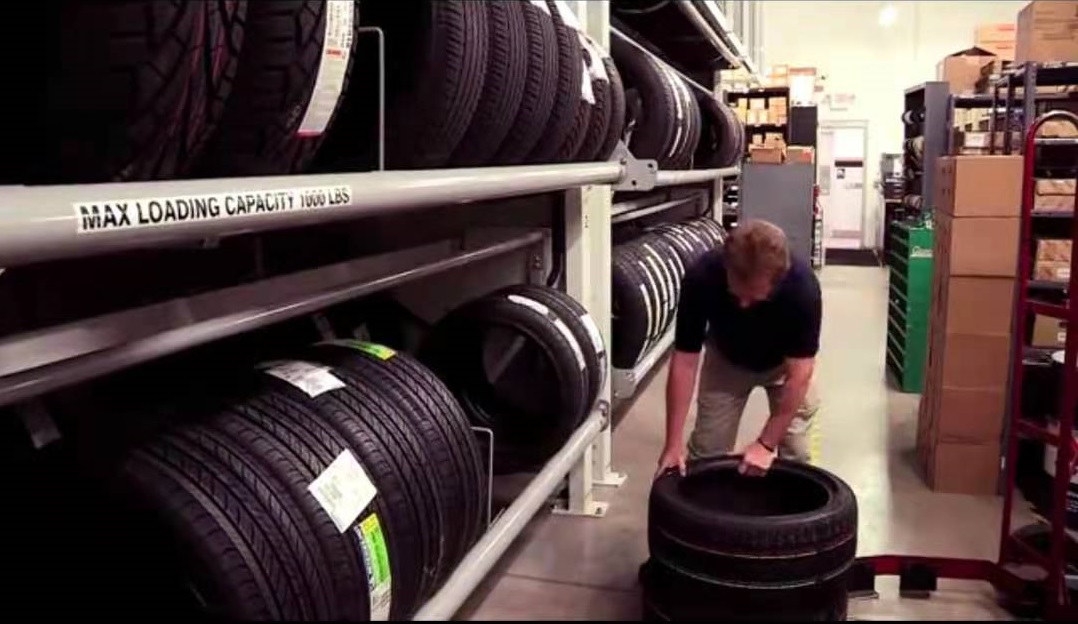Tyre Carousel: A Comprehensive Guide to Its Benefits and Uses

If you’ve ever visited a tire shop or service center, you’ve probably seen a tire carousel in action. This innovative piece of equipment has revolutionized the way tires are stored and handled, providing numerous benefits for both businesses and customers. In this article, we’ll take a closer look at the tyre carousel, including its design, functionality, and advantages.
Table of Contents
- What is a Tyre Carousel?
- How Does a Tyre Carousel Work?
- Benefits of a Tyre Carousel
- Types of Tyre Carousels
- Factors to Consider when Choosing a Tyre Carousel
- Installation and Maintenance of a Tyre Carousel
- Safety Considerations for a Tyre Carousel
- Applications of a Tyre Carousel
- Conclusion
- FAQs
What is a Tyre Carousel?
A tyre carousel is a specialized type of storage system used for organizing and handling large numbers of tires. It typically consists of a rotating vertical column or cylinder with multiple levels of shelves, each designed to hold a specific size or type of tire. The shelves are adjustable, allowing them to be customized to fit various tire sizes and configurations.
How Does a Tyre Carousel Work?
The tyre carousel is designed to make it easy and efficient to store and retrieve tires. The rotating column allows tires to be easily accessed without the need for heavy lifting or manual handling. When a tire is needed, the operator simply selects the appropriate shelf and rotates the column until the tire is within reach.
Benefits of a Tyre Carousel
There are several benefits to using a tyre carousel, including:
- Space-saving: A tyre carousel can store a large number of tires in a relatively small footprint, making it an ideal solution for businesses with limited storage space.
- Efficient: The design of the tyre carousel allows for quick and easy retrieval of tires, reducing the time and effort required to locate and transport them.
- Increased productivity: By minimizing the time spent on manual handling and retrieval, a tyre carousel can help improve overall productivity and efficiency in the workplace.
- Improved safety: The use of a tyre carousel can help reduce the risk of injury associated with manual handling of heavy tires.
Types of Tyre Carousels
There are several different types of tyre carousels available, including:
- Manual: A manual tyre carousel is operated by hand, using a crank or lever to rotate the column.
- Semi-automatic: A semi-automatic tyre carousel uses a motor to rotate the column, but requires manual input to select the desired shelf.
- Automatic: An automatic tyre carousel is fully automated, using sensors and controls to select and retrieve tires as needed.
Factors to Consider when Choosing a Tyre Carousel
When selecting a tyre carousel, there are several factors to consider, including:
- Size and capacity: The size and capacity of the tyre carousel should be matched to the needs of the business.
- Tire size and type: The tyre carousel should be able to accommodate the sizes and types of tires commonly used by the business.
- Installation requirements: The installation requirements for the tyre carousel, including power and space requirements, should be taken into consideration.
- Maintenance requirements: The maintenance requirements for the tyre carousel should be evaluated, including any ongoing maintenance or repair needs.
Installation and Maintenance of a Tyre Carousel
The installation of a tyre carousel typically involves securing the column to a stable base and connecting it to a power source. Ongoing maintenance may include regular cleaning and lubrication, as well as periodic inspections to ensure proper function.
Safety Considerations for a Tyre Carousel
- Ensuring that the tyre carousel is properly installed and maintained
- Adhering to weight and size limits for each shelf and the overall system
- Using appropriate personal protective equipment, such as gloves or safety glasses, when handling tires
- Avoiding overloading or unbalancing the tyre carousel
- Using caution when rotating the column to prevent collisions or entrapment
- Keeping the work area around the tyre carousel clean and free of obstructions
Applications of a Tyre Carousel
Tyre carousels are commonly used in a variety of industries, including:
- Tire shops and service centers
- Auto dealerships and service centers
- Fleet management and maintenance facilities
- Warehouse and distribution centers
In each of these settings, the tyre carousel provides a convenient and efficient way to store and handle tires.
Conclusion
The tyre carousel is an innovative storage and handling system that provides numerous benefits for businesses and customers alike. By offering a space-saving, efficient, and safe way to store and retrieve tires, the tyre carousel has become a popular choice for tire shops, service centers, and other businesses that deal with large numbers of tires.
FAQs
- What sizes and types of tires can be stored in a tyre carousel?
- Tyre carousels can be customized to accommodate a wide range of tire sizes and types, from small passenger tires to large commercial truck tires.
- Is a tyre carousel easy to install?
- The installation of a tyre carousel typically requires some basic construction and electrical skills, but can be completed by a qualified technician.
- What are the maintenance requirements for a tyre carousel?
- Regular cleaning and lubrication are recommended to ensure proper function, and periodic inspections should be conducted to identify and address any maintenance needs.
- How much space is required for a tyre carousel?
- The space requirements for a tyre carousel will vary depending on the size and capacity of the system, as well as the specific installation requirements.
- Can a tyre carousel be used for other types of products besides tires?
- While tyre carousels are specifically designed for tires, they can be adapted to store and handle other cylindrical or round-shaped products with similar dimensions.